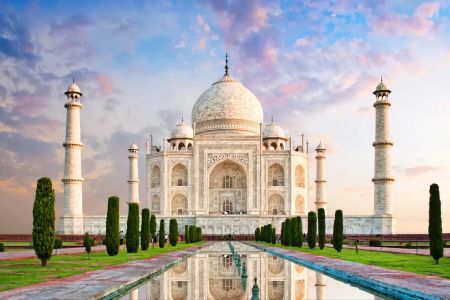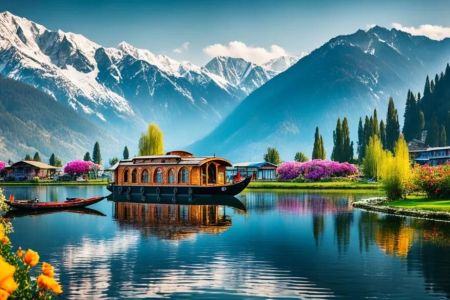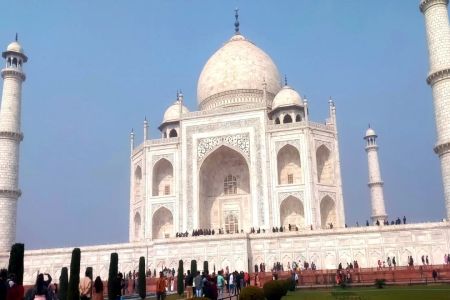How to Explore the Sacred Sites of India: A Traveler's Guide
India, with its rich spiritual heritage, offers a diverse range of sacred sites that attract pilgrims, spiritual seekers, and curious travelers alike. From ancient temples dedicated to revered deities to serene ashrams and holy rivers, India’s sacred sites hold deep religious and cultural significance. Whether you're seeking peace, enlightenment, or simply a deeper connection to India's traditions, exploring its sacred places can be a transformative experience. In this guide, we will explore the best ways to explore these sacred sites, from planning your journey to understanding the significance of each destination.
1. Understanding the Sacred Sites of India
India is home to a multitude of sacred sites, each holding unique importance for different religions, including Hinduism, Buddhism, Jainism, and Sikhism. These sites are not only places of worship but also of cultural and historical significance. For example, Varanasi, on the banks of the Ganges River, is one of the oldest continuously inhabited cities in the world and holds deep spiritual meaning for Hindus. Similarly, the Golden Temple in Amritsar is a key pilgrimage site for Sikhs. Each sacred site provides an opportunity for both physical and spiritual exploration, and understanding their history and significance can enhance your travel experience.
2. Popular Sacred Sites in India
India is teeming with sacred destinations, but there are some that stand out for their profound spiritual significance and beauty. Here are a few you should consider visiting:
- Varanasi – Located on the banks of the Ganges River, Varanasi is one of the holiest cities for Hindus. Known for its ghats, where people perform rituals and bathe in the sacred waters, Varanasi is also famous for its temples and vibrant spiritual life.
- Golden Temple (Amritsar) – This sacred site is a must-visit for anyone exploring India's spiritual landscape. The Golden Temple, also known as Harmandir Sahib, is the holiest shrine in Sikhism. Its serene atmosphere and stunning architecture make it one of the most revered places in the world.
- Kedarnath – Situated in the Himalayas, Kedarnath is one of the twelve Jyotirlingas, a group of shrines dedicated to Lord Shiva. The journey to Kedarnath involves a trek through breathtaking mountains, making it a spiritually and physically challenging pilgrimage.
- Bodh Gaya – Bodh Gaya is the site where Lord Buddha attained enlightenment. Visiting the Mahabodhi Temple and meditating under the Bodhi tree is a powerful experience for those interested in Buddhism.
- Rishikesh and Haridwar – These twin cities along the Ganges River are important spiritual centers for Hindus. Rishikesh is famous for its yoga retreats and ashrams, while Haridwar is known for its ghats, where pilgrims come to perform rites and immerse themselves in the holy river.
Each of these sacred sites offers a unique experience and provides opportunities for reflection, worship, and understanding the diverse spiritual traditions of India.
3. Best Time to Visit Sacred Sites in India
When planning a trip to India’s sacred sites, timing is crucial. The best time to visit largely depends on the specific region and the climate. Generally, the cooler months from October to March are considered the ideal time to explore India’s sacred sites. During this period, the weather is more pleasant, making it easier to travel and explore outdoor locations.
If you're planning to visit temples and sacred sites that are located in the Himalayas, like Kedarnath, it’s important to note that some areas are only accessible during certain months due to harsh weather conditions. Many sacred sites in India see a surge in visitors during the major religious festivals, so consider checking the calendar for events like Diwali, Holi, or Navaratri, which can enhance your cultural experience.
4. How to Respect Sacred Traditions and Practices
India’s sacred sites are deeply embedded in religious and cultural traditions, and it’s important to approach them with respect and reverence. Here are a few tips on how to respect these practices while traveling:
- Dress Modestly: Many sacred sites, especially temples and religious institutions, require modest dress. It’s important to cover your shoulders and legs when entering these places.
- Remove Footwear: It’s customary to remove your shoes before entering many sacred sites. Be prepared to leave your shoes at the designated area or store them in a shoe rack.
- Follow Rituals: Observe and follow local rituals. For instance, you may be asked to offer flowers or incense at a temple or participate in a prayer ceremony.
- Be Quiet and Respectful: Sacred spaces often require silence and introspection. Keep your voice low and avoid loud conversations, especially in places like monasteries or temples.
By following these practices, you’ll not only show respect but also gain a deeper understanding of the spiritual significance of these sacred sites.
5. Combining Sacred Site Exploration with Adventure Activities
One of the unique aspects of exploring sacred sites in India is the opportunity to combine spiritual experiences with adventure activities. Many of the sacred destinations are located in scenic and remote areas, making them perfect for outdoor activities. For instance:
- Trekking in the Himalayas: For those visiting Kedarnath or other Himalayan temples, you can enjoy scenic treks that challenge you physically while providing spiritual rewards.
- River Rafting in Rishikesh: Rishikesh, famous for its spiritual significance, is also known for adventure activities like white-water rafting on the Ganges River.
- Wildlife Safaris in India’s Sanctuaries: Many sacred sites are located near national parks and wildlife sanctuaries, such as the Jim Corbett National Park, where you can experience India’s rich biodiversity.
By combining your visit to sacred sites with adventure, you can make your trip to India even more memorable, offering a mix of reflection and physical activity.
6. Planning Your Sacred Sites Journey in India
Planning a trip to India’s sacred sites requires careful consideration of your itinerary, travel logistics, and accommodation. Here are some tips to help you plan:
- Choose Your Destinations Wisely: Depending on the duration of your trip, it’s important to choose sacred sites that align with your interests and spiritual goals. Some sites, like Varanasi and Bodh Gaya, are iconic and may require more time to explore.
- Book Accommodations in Advance: Sacred sites, especially during festivals or peak travel seasons, can get crowded. It’s wise to book your accommodations well in advance.
- Consider Local Tours: Local guides can provide valuable insight into the history, culture, and significance of the sacred sites. They can also ensure that you respect local traditions and customs.
By taking these steps, you can ensure a smooth and enriching experience while exploring the sacred sites of India.











